Dear reader: This article contains links to products and services that I may be compensated for, at no extra cost to you.
Having lived, worked, and traveled extensively in both Taiwan and Thailand, I’m writing this article to make some subjective and objective comparisons between them.
My wife is Taiwanese, I’ve lived in Taiwan for over a decade, and our kids have been born and raised there.
But whenever we travel to my home in Canada or in other parts of the world, we repeatedly face a similar reaction when we tell people we are from Taiwan. Usually it’s “Oh, I’ve heard the beaches are amazing!” or something that similarly shows the speaker thinks we are talking about Thailand.
The sad truth is that a disturbing number of people in the world think Taiwan and Thailand are the same country. Taiwanese post offices even have a stamp that says “incorrectly mailed to Thailand”! Yes, I know both countries are in Asia and start with “Tai.” But do I really need to get out a map?
I’ve written this article not only to remind everyone that these two countries exist and are different but also, just for fun, to compare various aspects of Thailand and Taiwan. I’ll cover their cuisines, cultures, economies, and more.
I realize you may also be here to decide which country is better for traveling to or living in, so I hopefully this article will also help you decide on that.
Table of Contents
What are Thailand and Taiwan famous for?
Thailand
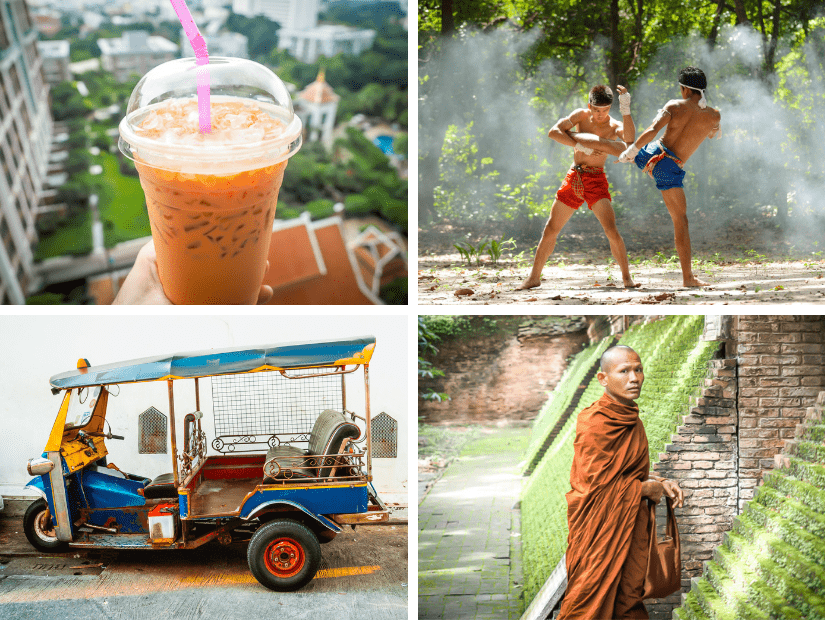
- Spicy food
- Islands and white-sand beaches
- Muay Thai (Thai boxing)
- Tuk tuks
- Orange-robed monks
- Buddhist temples
- Backpackers and tourist resorts
- The wai greeting
- Knock-off products and Thai elephant pants
- Thai massage and Thai tattoos
- Elephant camps
- Sex tourism and ladyboy shows
- Pad thai and Thai iced tea (always made with ChaTraMue!)
- The Golden Triangle and opium
- Hill tribes
- Floating markets
- Long tail boats
Taiwan

- Taipei 101 (once the world’s tallest building and most famous landmark)
- Night markets
- Scooters
- Bubble tea and high mountain oolong tea
- One of the “Asian Tigers”
- Computers (Acer and Asus) and smartphones (HTC)
- Bicycles (Merida and Giant)
- “Made in Taiwan” products
- Being a country that few countries officially recognize
- First Asian country to legalize equal marriage rights
- Beef noodles and stinky tofu
- Thermal hot springs
- Pop music
- Tons of 7-Elevens (even more than Thailand!)
- Arms deals with the US
- Success in handling COVID
- Betel nut girls
- Origin of the Austronesian people
To learn more about what Taiwan is known for, read these interesting Taiwan facts!
What’s the Difference Between Taiwan and Thailand for Traveling?

Both Thailand and Taiwan are enticing destinations offering something for everyone, including amazing food, beautiful temples, impressive festivals, spectacular nature, bustling markets, and various outdoor activities. Taipei, the capital city of Taiwan, and Bangkok, the capital city of Thailand, are frenetic, bustling cities with so much going on.
Thailand is quite a bit more popular than Taiwan among tourists. In 2019, Thailand received 40 million tourists, while Taiwan received 12 million. Thailand is also noticeably more popular among Western tourists and has far more resorts, services, and amenities aimed at international tourists.
In other words, when visiting Thailand, you may feel more like “just another tourist”, while in Taiwan, you will definitely feel closer to “off-the-beaten-track” territory.

Beach lovers will naturally gravitate to Thailand, which has better beaches and far more of them (Taiwan has these ones, but they just aren’t as stunning), while Taiwan offers high-mountain trekking, cherry blossom viewing, dozens of hot springs, and more (here are my 55 favorite things!) Thailand has more of a tourist party scene (including shadier aspects of it), while Taiwan’s lacks anything remotely comparable to Khao San Road and sex tourism is almost non-existent there.
In terms of cost, you will get more bang for your buck in Thailand, but you have less of a chance of encountering tourist scams like these when traveling in Taiwan. When it comes to communication, you’ll find that many people can speak at least some English in both countries, although Taiwanese can be a little shier using it.
Taiwanese have been called the most welcoming in Asia, while Thailand is known as the “Land of Smiles”. However, as any old-school Thailand traveler will tell you, Thais don’t love tourists as much as they used to because there are just so damn many obnoxious ones.
Some famous tourist attractions in Taiwan include Sun Moon Lake, Alishan Scenic Area, Rainbow Village, and Taroko Gorge. Some of Thailand’s most famous places include Chiang Mai, Ayutthaya, Phuket, and Ko Phangan.
See here for more information on traveling in Taiwan and traveling in Thailand.
For those who love details, I’d now like to compare Thailand and Taiwan in a number of specific aspects:
Location & Size
In a nutshell: Thailand is in Southeast Asia and is more than 10 times bigger than Taiwan, which is in Northeast Asia.
Thailand
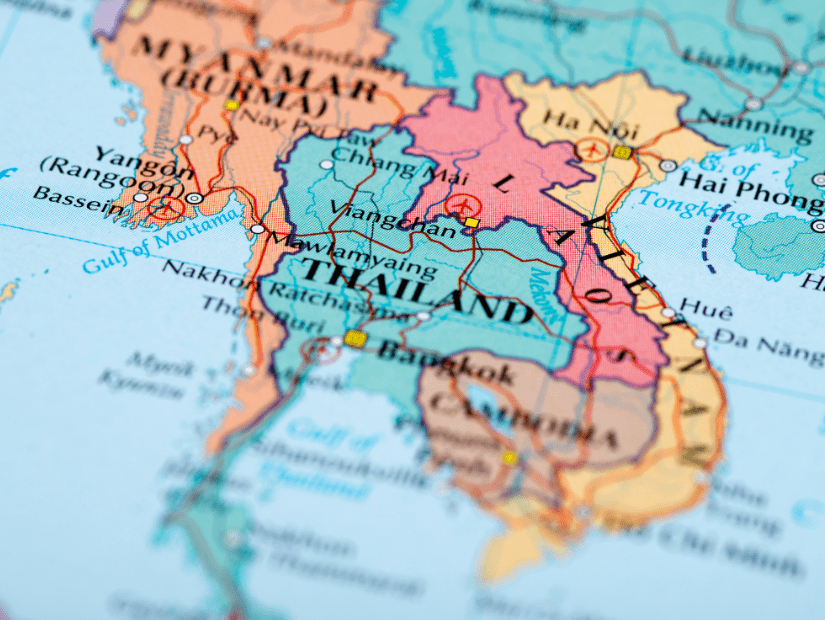
Thailand is located in Southeast Asia, an area that in the past was also called Indochina due its historical and cultural connections to both India and China. It shares borders with Myanmar, Cambodia, Laos, and Malaysia.
At 513,120km2 Thailand is the second largest country in mainland Southeast Asia. Only Myanmar (676,578 km2) is larger, while Indonesia (1,904,569 km2) is the largest country if we include Maritime Southeast Asia.
Taiwan
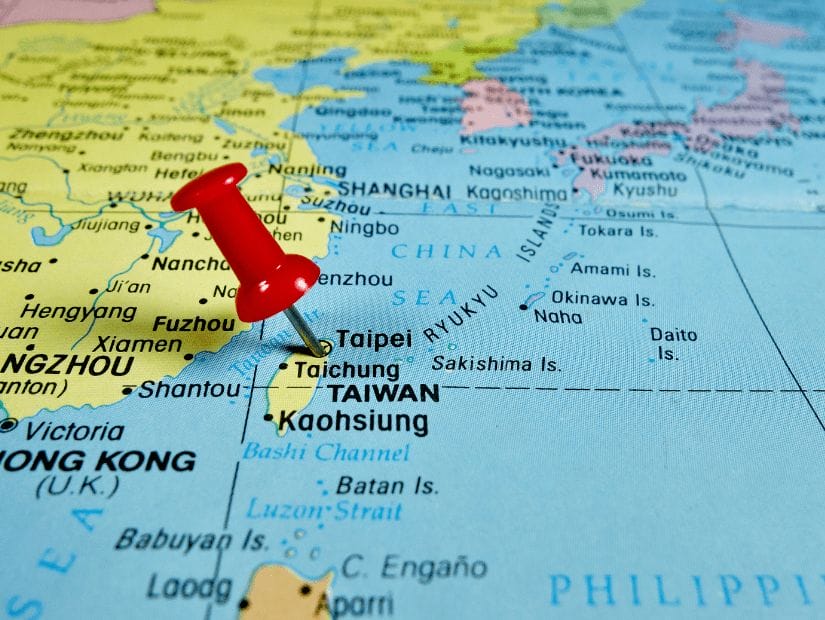
Taiwan, also called Formosa in the past, is an island nation in East Asia. Most commonly it is lumped in with Northeast Asia culturally, but some consider it part of Southeast Asia geographically. It lies in the Pacific Ocean off the southeast coast of China, separated from the latter by the 180-km-wide Taiwan Strait. Its closest neighbors are Japan, China, and the Philippines.
Taiwan is 36,193 km² in size, only about 7% of the total size of Thailand.
Geography and Climate
In a nutshell: Thailand is tropical and consists of forested hills, plains, and islands. Taiwan is a Pacific island nation with a subtropical climate and lots of high mountains.
Thailand

The far north of Thailand is hilly and forested while the country’s center has fertile plains. In the south there’s a long, thin peninsula with the Andaman Sea to the west and Gulf of Thailand to the east. The highest mountain in Thailand is Doi Inthanon, at 2,565 m (8,415 ft).
Thailand has a tropical climate with less seasonal variation than Taiwan. Winter is warm, spring is very hot and muggy, and a monsoon season runs from June to October, with heavy rains on a daily basis. Snow in Thailand is exceptionally rare.
See here for more on the best time to visit Thailand.
Taiwan
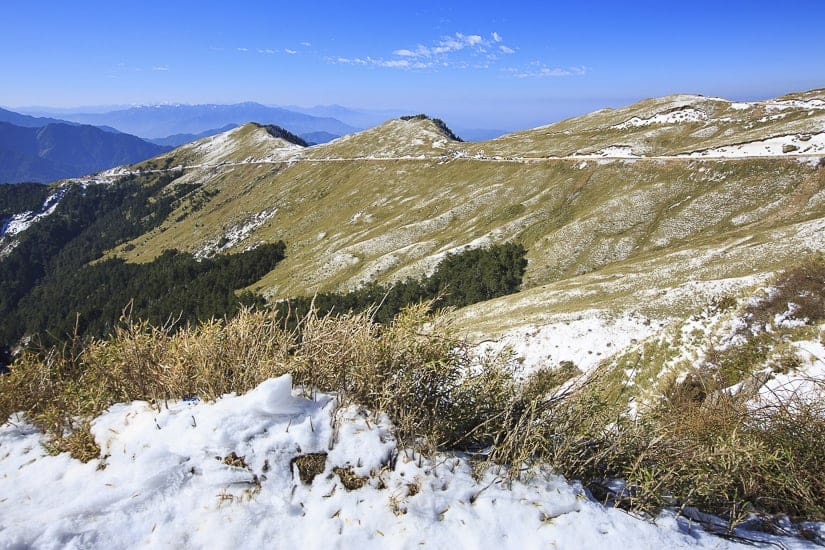
Taiwan is a mountainous island. With 286 mountain summits over 3,000 meters (9,800 feet), it has the highest density of high mountains on any island in the world. This includes Yushan (3,952 m or 12,966 ft), the highest peak in Northeast Asia.
Much of the country sits on a major fault line, thus it is home to dormant volcanoes and over 100 major hot springs, including Beitou hot spring right in Taipei City.
Taiwan’s climate is considered subtropical, with distinct summer and winter seasons. Summers in Taiwan are very hot and humid (comparable to spring in Thailand), while winters (especially in the north) are damp and cool. The Tropic of Cancer runs through southern Taiwan, so parts below it are considered to have tropical weather.
Although there is no rainy season in Taiwan (besides a small one in late spring called the Plum Monsoon), around half a dozen typhoons usually strike Taiwan in summer. In winter in Taiwan several mountain peaks receive snow, and there even used to be a small ski resort on one of them.
See here for more on the best time to visit Taiwan.
Population and Language
In a nutshell: Thailand has three times the population of Taiwan, but Taiwan is five times more crowded. Thais mainly speak Thai, while Taiwanese mainly speak Mandarin and Taiwanese.
Thailand

The current population of Thailand is 69.9 million, with a population density of 137 people per square kilometer (or 354 per square mile).
Sources vary on the ethnic composition of Thailand, but most put Thais at 90-95%. However, 10-15% of those may be considered ethnically Chinese. Another 5% consists of 70+ ethnic minorities, including Khmers, Malays, Bamar, Karen, and Hmong.
Thai is the official language of Thailand and it has four main dialects. Linguists recognize 70 other living languages in Thailand.
Taiwan
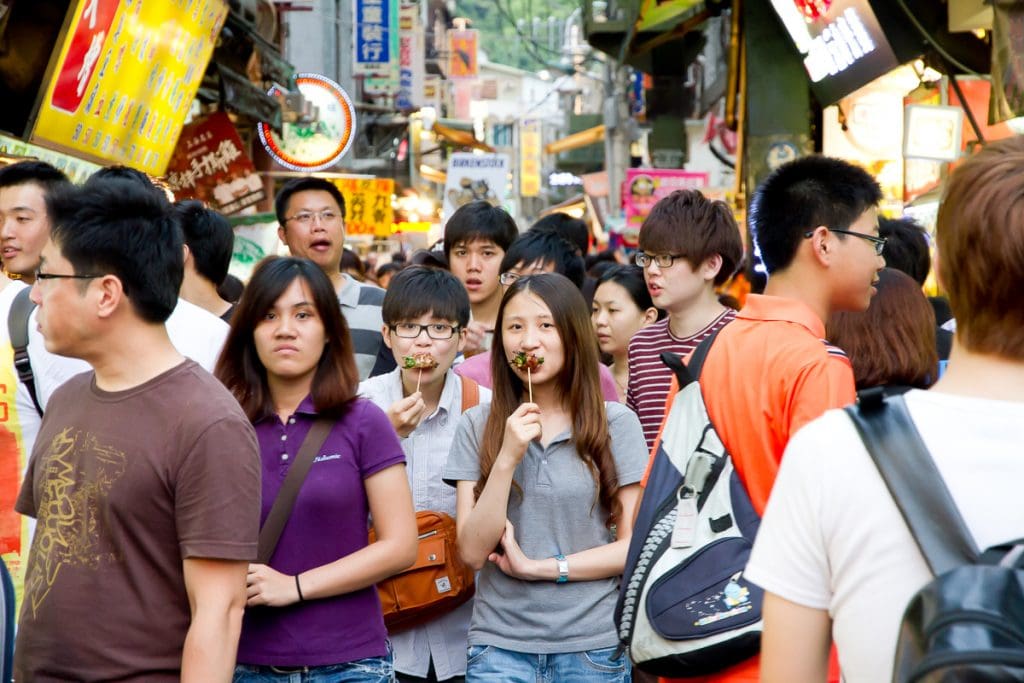
The current population of Taiwan is 23.8 million, with a population density of 673 people per square kilometer (or 1,742 per square mile).
95-97% of Taiwanese are ethically of Han Chinese origin, but blood tests reveal that up to 85% of them have some Taiwanese aboriginal ancestry mixed in. A significant number of Taiwanese trace their ancestry to the Minan region of Fujian province in southeastern China, while 15-25% are Hakka.
There are 16 officially recognized aboriginal tribes in Taiwan, making up 2% of the population.
Taiwan has four official languages: Taiwanese (also called Holo, Taiyu, or Minnan), Mandarin, Hakka, and the Formosan (aboriginal) languages collectively.
Culture and Religion
In a nutshell: Thais practice Buddhism and their culture has been influenced by India, China, and other Southeast Asian cultures. Taiwanese practice a combination of Daoism, Buddhism and folk religion, and their culture is similar to China’s, but with influences from aboriginals and Japanese.
Thailand
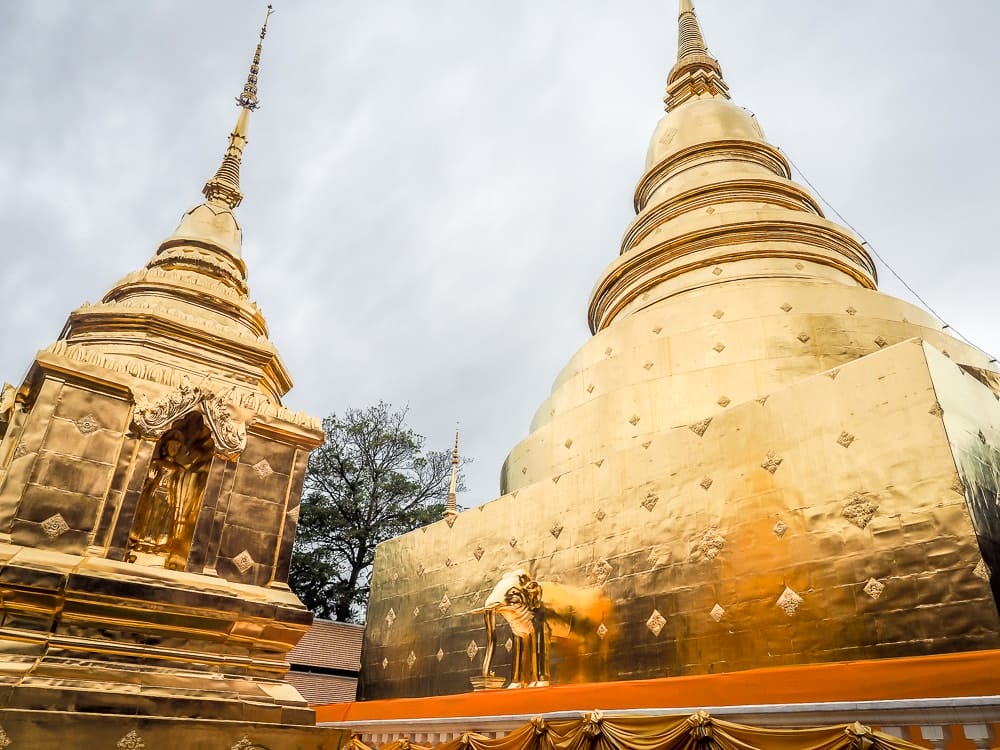
Thai culture was historically animistic, and we can still see elements of this today, for example in spirit houses seen everywhere. Over time, Thai culture has been influenced by Hinduism and Indian culture (including rickshaws, called tuk tuks in Thailand, and the wai, a form of greeting with the palms together), as well as Chinese culture and other Southeast Asian cultures.
Mahayana Buddhism is intertwined with Thai culture today, and 95% of Thais are Buddhist. Shimmering wats (temples) are a ubiquitous sight across the country, while monks and nuns are treated with utmost respect. Thai wats often feature tall bell-shaped stupas (chedis) that may be covered in gold. Visitors take off their shoes to pray and burn incense inside.
Taiwan

With most people in Taiwan tracing their ancestry to China, Taiwanese culture has roots in ancient Chinese culture. Major Chinese festivals and the Chinese Lunar Calendar are adopted in Taiwan.
However, cultural separation from China for hundreds of years, complications in the political relationship between Taiwan and China, the influence of indigenous Taiwanese cultures, and colonization by European powers and Japan have resulted in a culture in Taiwan that most, Taiwanese included, consider as distinct from that of China.
As was traditionally practiced in China, Taiwanese religion includes Buddhism, Taoism, and folk religious beliefs, often in combination. Around 2% of Taiwanese are Catholic, including many aboriginals.
Taiwanese temples are Southern Chinese style. They are highly ornate and colorful. Visitors burn incense, cast fortune telling blocks, and more inside.
Thai vs. Taiwanese Cuisine
In a nutshell: Thai food is known for being fragrant, spicy, sour, and sweet, while Taiwanese food can be compared to Chinese food but with local modifications and some Japanese influence.
Thailand

Thai food is fragrant and notoriously spicy. Most dishes revolve around a delicate balance between savory, sweet, sour, bitter and spicy ingredients. Jasmine rice is a staple, while rice noodles are also very common.
Common ingredients in Thai food include garlic, galangal, lemongrass, coconut, cilantro, shallots, kaffir lime, shrimp paste, chillies, fish sauce, and sugar. Seafood is common in the south.
Curries (including red, yellow, and green) and raw mango and papaya salads are common dishes. Pad thai is the most common Thai dish known outside of Thailand.
Chinese stir-fried and steamed dishes have also found their place among Thai cuisine. Thai iced tea is a popular drink that is sweetened with condensed milk. While Thailand grows some tea, it is not common.
Thai people usually eat with a fork in the right hand, which is used to push food into a spoon in the left hand which is then put into the mouth. Sticky rice is eaten with the fingers of the right hand.
Taiwan

Taiwanese cuisine consists mainly of dishes brought over from Fujian province and other parts of China, many of which have been modified over time. Aboriginal ingredients such as taro are popular, while Japan’s 50-year colonial occupation left a huge mark on Taiwanese food.
Common ingredients in Taiwanese food are garlic, soy sauce, vinegar, seafood, seafood, pork, bamboo, tofu, and leafy greens. Soups and noodles are also very common. Taiwanese food is typically not spicy, or spicy sauce is added after being served.
Taiwan gets a lot of attention for its night markets, where a wide variety of dishes have been innovated and popularized. Some of the most well known Taiwanese dishes include beef noodles, stinky tofu (there’s even a whole street in Taipei dedicated to stinky tofu!), gua bao (the “Taiwanese hamburger”), and braised pork rice. Here are 101 Taiwanese street food dishes.
Interestingly, a lot of Thai and Southeast Asian food is available in Taiwan, due to the large Southeast Asian migrant worker population. Recently, while touring night markets in Tainan, southern Taiwan, I noticed even more Thai food stalls popping up than in the past.
Bubble tea (also known as boba or pearl milk tea) was invented in Taiwan.
Taiwanese people typically eat with chopsticks, or use a large spoon for soups and stews.
Politics and Economy
In a nutshell: Thailand is a constitutional monarchy with a king and elected leaders, while Taiwan is a democracy with a complicated relationship with China. Taiwan has a stronger economy and its people earn over twice as much.
Thailand
Thailand is a constitutional monarchy, a democratic system with the king as head of state. Images of the king are seen everywhere and it is illegal to criticize him. In 2014, military commander Prayut Chan-o-cha staged a military coup. In 2019, he won a highly disputed election and he remains the prime minister today.
Thailand is a newly industrialized country and is the 8th largest economy in Asia. The GDP per capita (PPP) is $18,275. Main sectors include agriculture, manufacturing (electronics, steel, automobiles), and tourism.
Taiwan
Taiwanese politics are defined by a complicated relationship with China. When the nationalist Chinese KMT party lost the Chinese Civil War to the communists in 1949, it fled to Taiwan and continued its “Republic of China” there, and this remains the official name of Taiwan today (leading to lots of confusion).
Today Taiwan is a vibrant democracy. The current president, Tsai Ing-wen, belongs to the DPP, the main opposition party to the KMT. The DPP tends to emphasize Taiwanese independence while the KMT supports closer ties with China.
Most countries in the world don’t officially recognize Taiwan as a country because China bullies or pays them not to. China considers Taiwan a province of China, but the majority of Taiwanese consider it not. China also forces Taiwan to call itself “Chinese Taipei” in events like the Olympics and it has lobbied for Taiwan to be excluded from the UN and WHO.
Taiwan was one of the four “Asian Tigers” that rapidly industrialized from the 1960s to 1990s. While many cheap items and toys used to be “Made in Taiwan”, today the country is known for making computer, smartphone and machine parts, petrochemicals, and for its financial industry.
Taiwan is the 7th largest economy in Asia. The GDP per capita (PPP) is $54,020.
I hope that by now you’ve got a pretty clear idea of what the differences between Taiwan and Thailand are. If there’s anything you feel should be added, please mention it below in the comments!



I always knew that Thailand and Taiwan wasn’t the same place but as a person that watches thai and taiwanese dramas, I can never tell the language apart-
Definitely that are some subtle similarities between the languages as they all originate in the southern China region.
Oh my God. You made it so easier to understand. Crystal clear. Hope no one ask me again “so you know some good Thai food around?” after I told them I’m from Taiwan.
Though I have been to Thai restaurants, and my cousin married a California girl who was born in Taiwan, I only recently started thinking I should learn the difference.
(So many questions in the news, about how US should relate to Taiwan especially.) Thanks so much (i not only feel better educated, i feel like a couch tourist- lovely descriptions : )
Which is safer for travel if you aren’t traveling with a group or tour?
Both countries are considered safe for travel. In my personal opinion, day-to-day travel in Taiwan is a little safer. The country is considered one of the safest in the world, there is very little street crime, and people are extremely honest so there are virtually no scams. Thailand, on the other hand, has a whole host of scams that you need to be careful about. Taiwan, on the earth hand, has the looming threat that China could someday attack, so that’s one thing to keep in mind, although locals in Taiwan don’t generally worry too much about this. Driving/traffic in either country can be a little wild, so they are on par in that regard. Natural disasters can affect both (for example, floods or tsunamis in Thailand, typhoons in Taiwan).
Great descriptions, they’re both very unique countries but with similar, easy to mixed them up names. Just like Austria vs. Australia or Budapest vs. Bukarest. As I live in Budapest, I know how you feel about this. Even Hungary is mistakenly written or spoken Hungry by so many lol.
I’m surprised to hear that, but also not surprised at all. Thanks for your input!
Do the two countries have friendly relations?
Thailand does not official recognize Taiwan as a country, but there are in fact only 13 countries in the world that do. Otherwise, as far as I know, relations are friendly between the two countries and travel between them is easy and cheap. But I’m not an expert on this.
Great article! Thank you for sharing. Any opinion or observations on the difference between the personalities of the two peoples? Have hosted an exchange student from Thailand and am now considering one from Taiwan. Wondering if there will be much difference.
This is be a major generalization, but young Taiwanese tend to be VERY shy. In my personal experience, more so than Thai youths. This comes from experience teaching teens and young adults in both countries. But of course not all of them are so, and all kinds of personalities are possible.
Having hosted several times from different countries I have learned with teenagers, anything is possible. 🙂 I appreciate your input from first-hand experience. Thanks!